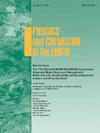Elevation-driven biases in seasonal weather forecasts: Insights from the Alpine region
IF 4.1
3区 地球科学
Q2 GEOSCIENCES, MULTIDISCIPLINARY
引用次数: 0
Abstract
Generating reliable weather forecasts over mountainous regions is challenging. Indeed, global seasonal weather forecasting systems inherit biases that affect hydrological applications. In this context, we investigate the dependence of seasonal weather forecast biases on terrain characteristics in the Trentino-South Tyrol region, northeastern Italian Alps, with reference to precipitation and 2-m temperature variables. To this end, the European Centre for Medium-Range Weather Forecasts (ECMWF) fifth-generation seasonal forecast system (SEAS5) dataset is used at a horizontal spatial resolution of with 25 ensemble members in the hindcast period from 1981 to 2016. The observational reference dataset used to evaluate the biases is a regional product routinely adopted in the interested area for hydrological applications, characterized by daily gridded precipitation and mean temperature at a spatial scale of 250 m 250 m during the time window 1980–2018. The spatio-temporal variation of the biases at the monthly timescale is investigated here, and its dependence on elevation is interpreted using linear regression models. A simple correction model is also devised to investigate and analyze the linear correlation between forecast biases and elevation bias and elucidate the role of ensemble members in bias generation.
季节性天气预报中的海拔驱动偏差:来自阿尔卑斯地区的见解
为山区提供可靠的天气预报是一项挑战。事实上,全球季节性天气预报系统继承了影响水文应用的偏差。在此背景下,我们研究了意大利东北部阿尔卑斯山脉特伦蒂诺-南蒂罗尔地区季节性天气预报偏差对地形特征的依赖,参考降水和2m温度变量。为此,使用欧洲中期天气预报中心(ECMWF)第五代季节预报系统(SEAS5)数据集,水平空间分辨率为0.125°×0.125°,在1981 - 2016年的后发期有25个集合成员。用于评估偏差的观测参考数据集是水文应用在感兴趣地区常规采用的区域产品,其特征是1980-2018年时间窗期间250 m × 250 m空间尺度上的日格点降水和平均温度。本文研究了月尺度上的时空变化,并利用线性回归模型解释了其对海拔的依赖关系。本文还设计了一个简单的修正模型来研究和分析预报偏差与高程偏差之间的线性关系,并阐明集合成员在偏差产生中的作用。
本文章由计算机程序翻译,如有差异,请以英文原文为准。
求助全文
约1分钟内获得全文
求助全文
来源期刊

Physics and Chemistry of the Earth
地学-地球科学综合
CiteScore
5.40
自引率
2.70%
发文量
176
审稿时长
31.6 weeks
期刊介绍:
Physics and Chemistry of the Earth is an international interdisciplinary journal for the rapid publication of collections of refereed communications in separate thematic issues, either stemming from scientific meetings, or, especially compiled for the occasion. There is no restriction on the length of articles published in the journal. Physics and Chemistry of the Earth incorporates the separate Parts A, B and C which existed until the end of 2001.
Please note: the Editors are unable to consider submissions that are not invited or linked to a thematic issue. Please do not submit unsolicited papers.
The journal covers the following subject areas:
-Solid Earth and Geodesy:
(geology, geochemistry, tectonophysics, seismology, volcanology, palaeomagnetism and rock magnetism, electromagnetism and potential fields, marine and environmental geosciences as well as geodesy).
-Hydrology, Oceans and Atmosphere:
(hydrology and water resources research, engineering and management, oceanography and oceanic chemistry, shelf, sea, lake and river sciences, meteorology and atmospheric sciences incl. chemistry as well as climatology and glaciology).
-Solar-Terrestrial and Planetary Science:
(solar, heliospheric and solar-planetary sciences, geology, geophysics and atmospheric sciences of planets, satellites and small bodies as well as cosmochemistry and exobiology).
 求助内容:
求助内容: 应助结果提醒方式:
应助结果提醒方式:


